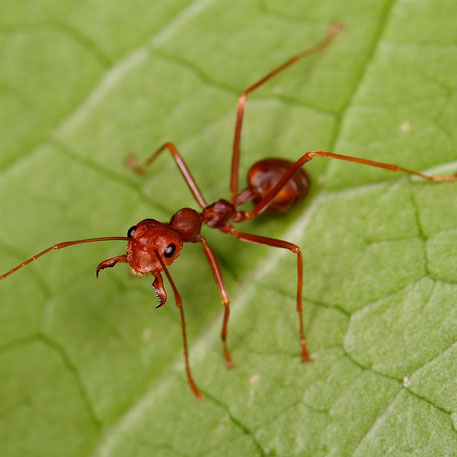August 8, 2014 — Ants are mighty little creatures. They inhabit every continent on Earth except Antarctica. They can lift 10 to 50 times their body weight. And now, one new study suggests, they may have the potential to help curb global warming.
In “Ants as a Powerful Biotic Agent of Olivine and Plagioclase Dissolution,” Ronald Dorn of Arizona State University studied calcium-magnesium silicate mineral dissolution by ants, termites, tree roots and bare ground at six sites in Arizona and Texas over 25 years. Ants emerged as the leader in promoting mineral decay, a process in which calcium and magnesium released by mineral decay combine with carbon dioxide from the atmosphere to produce limestone or dolomite. In fact, ant nests appear to enhance mineral dissolution by two to three orders of magnitude.
So what does this mean for carbon and the climate? Dorn suggests ant-based carbon sequestration may have contributed to Earth’s cooling during the Cenozoic Era, and proposes using ants as a model for developing new strategies to combat human-induced climate change through enhanced mineral dissolution and more efficient accumulation of calcium carbonate from atmospheric CO2. Photo by Troup Dresser (Flickr | Creative Commons)
Ensia shares solutions-focused stories free of charge through our online magazine and partner media. That means audiences around the world have ready access to stories that can — and do — help them shape a better future. If you value our work, please show your support today.
Yes, I'll support Ensia!
